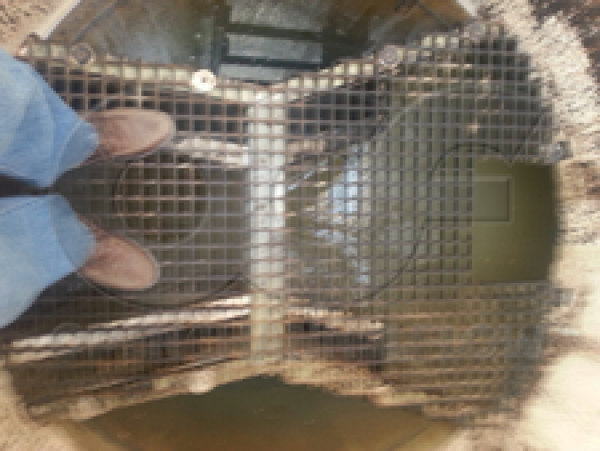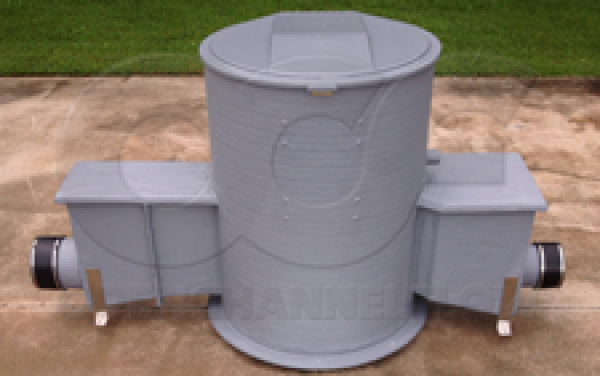This website uses a variety of cookies, which you consent to if you continue to use this site. You can read our Privacy Policy for
details about how these cookies are used, and to grant or withdraw your consent for certain types of cookies.
Installing a Domed Top Packaged Metering Manhole
Fiberglass Flow Metering Manholes from Openchannelflow are a great solution to the problem of needing to measuring below ground flows. The manholes are light weight, corrosion resistant, watertight, and come with flume, weir, or mag meter already factory integrated.
The installation of a metering manhole is simple and straight forward. The light weight construction (typically 1/10th the weight of concrete) means that less manpower and equipment is needed to complete an installation.
To show you just how easy metering manholes are to install, one Openchannelflow representative documented the process of installing a domed top manhole in the Midwest.
Excavating The Site
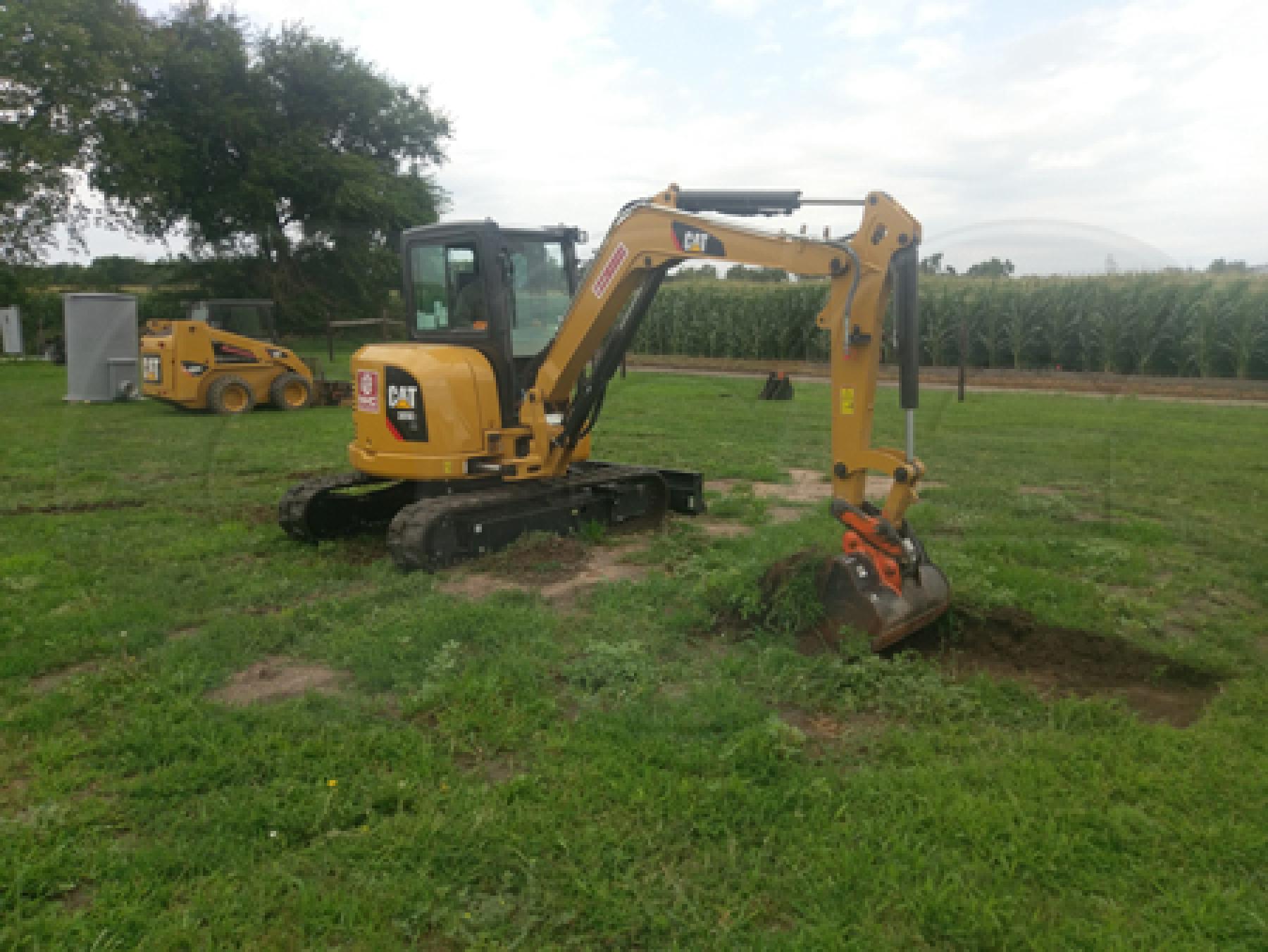
Exposing the Pipe
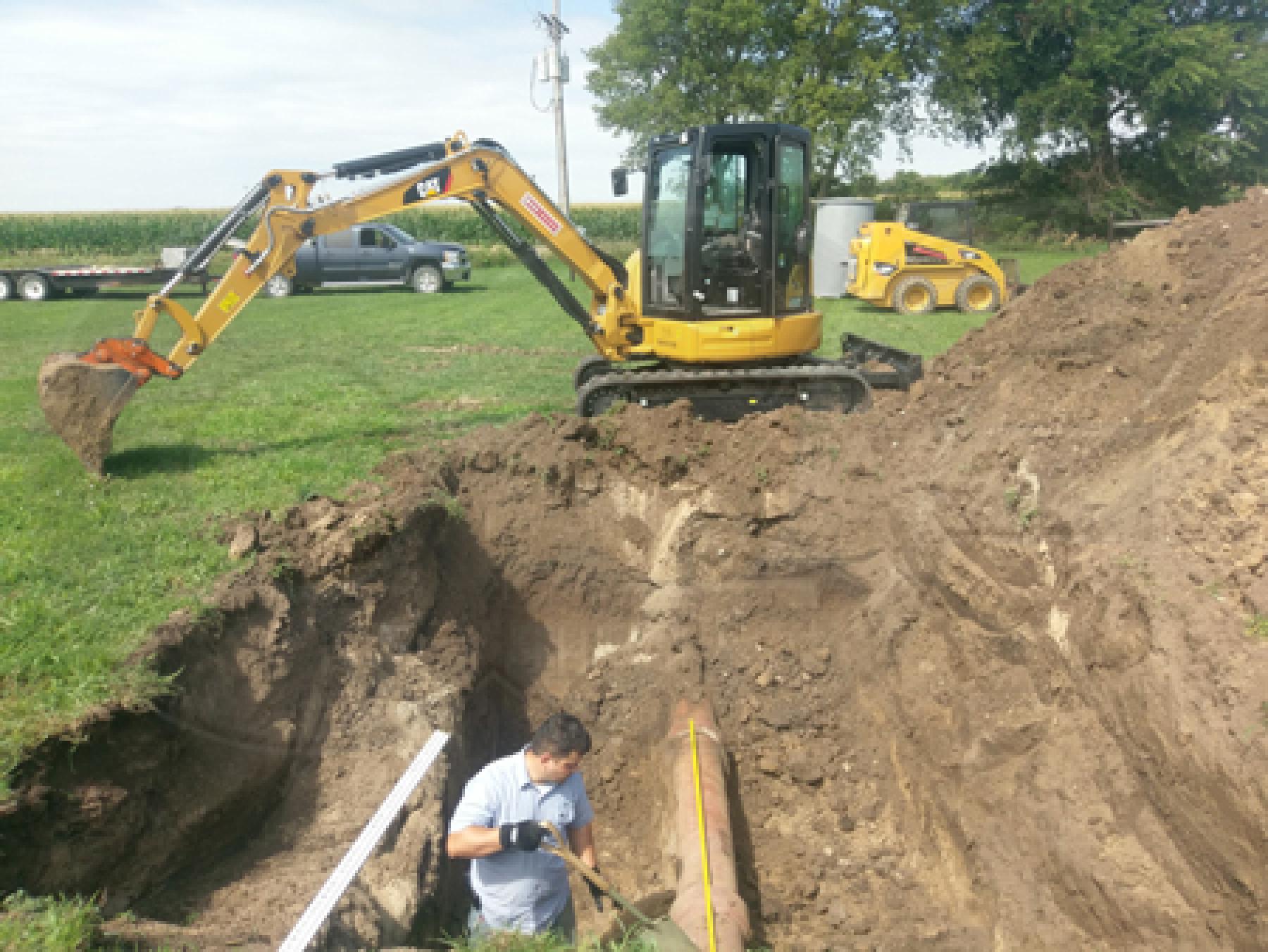
Forming the Pad
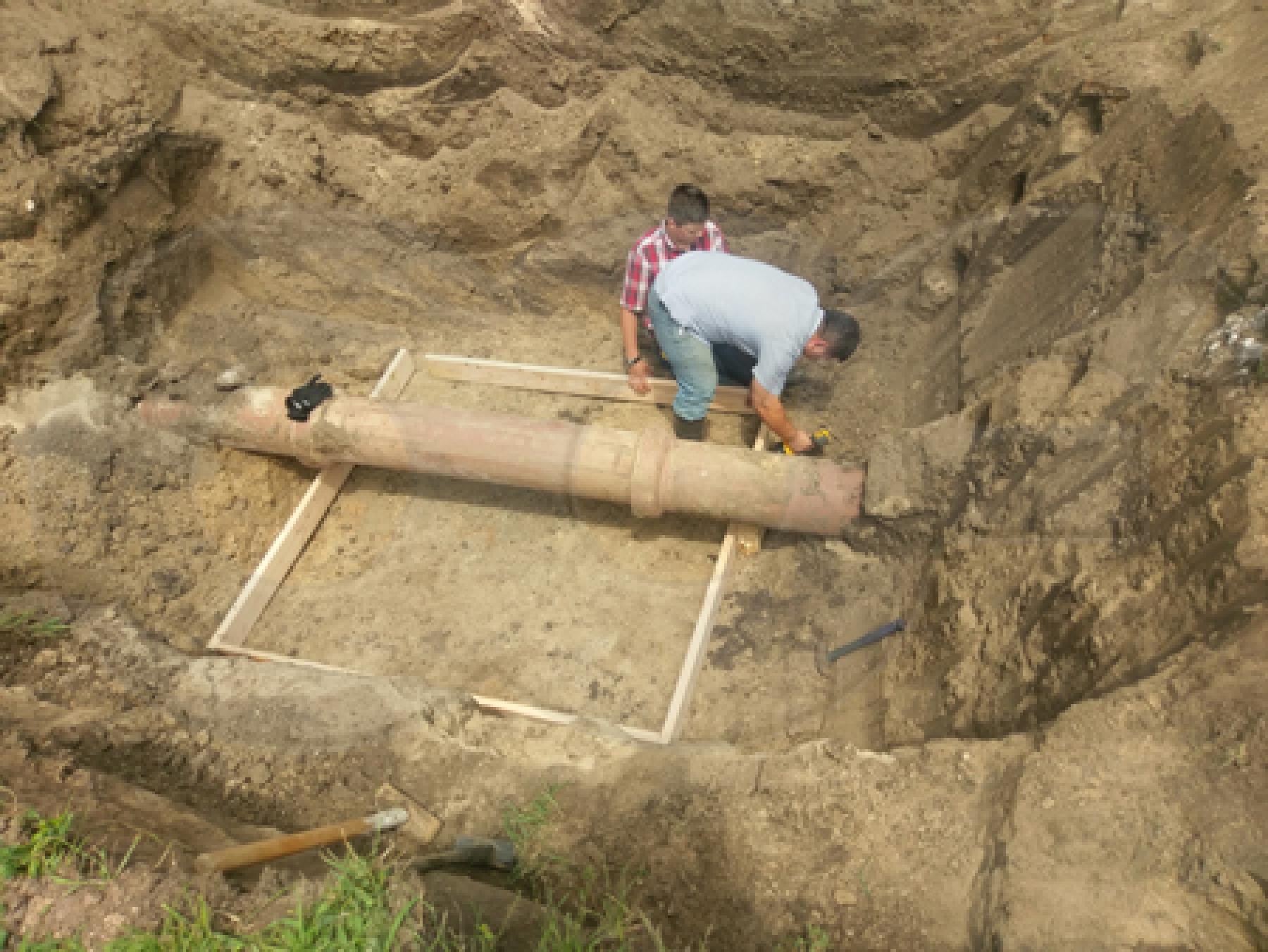
In forming the pad, the pad should be large enough to contain all of the manhole, the flume, and any pipe stubs or flanges. Ideally, the pad should allow an additional 6" of space all around.
Manhole Pad Finished
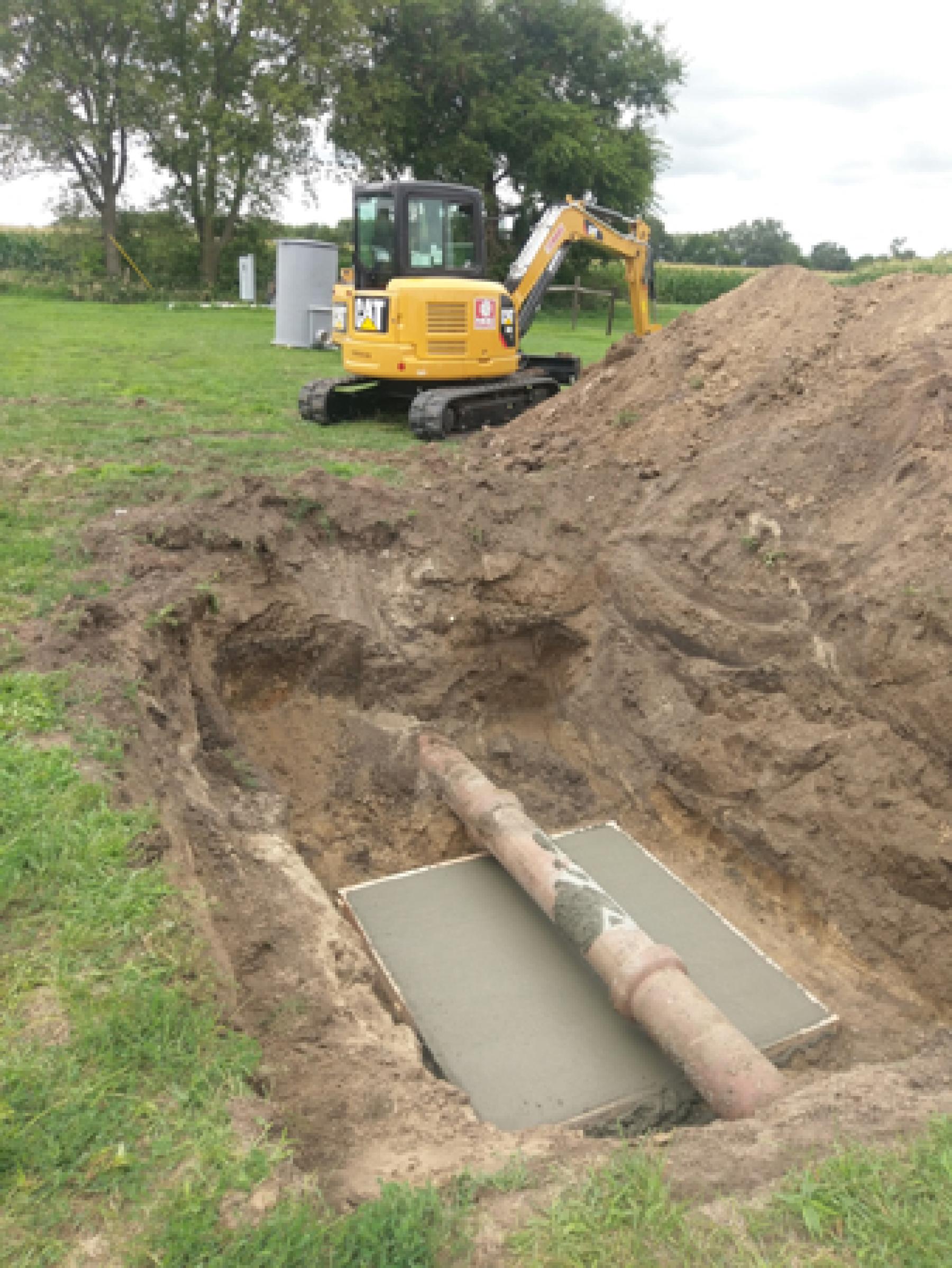
The manhole pad should be level in both direction and should have a smooth surface, with no aggregate sticking up.
Cutting the Pipe
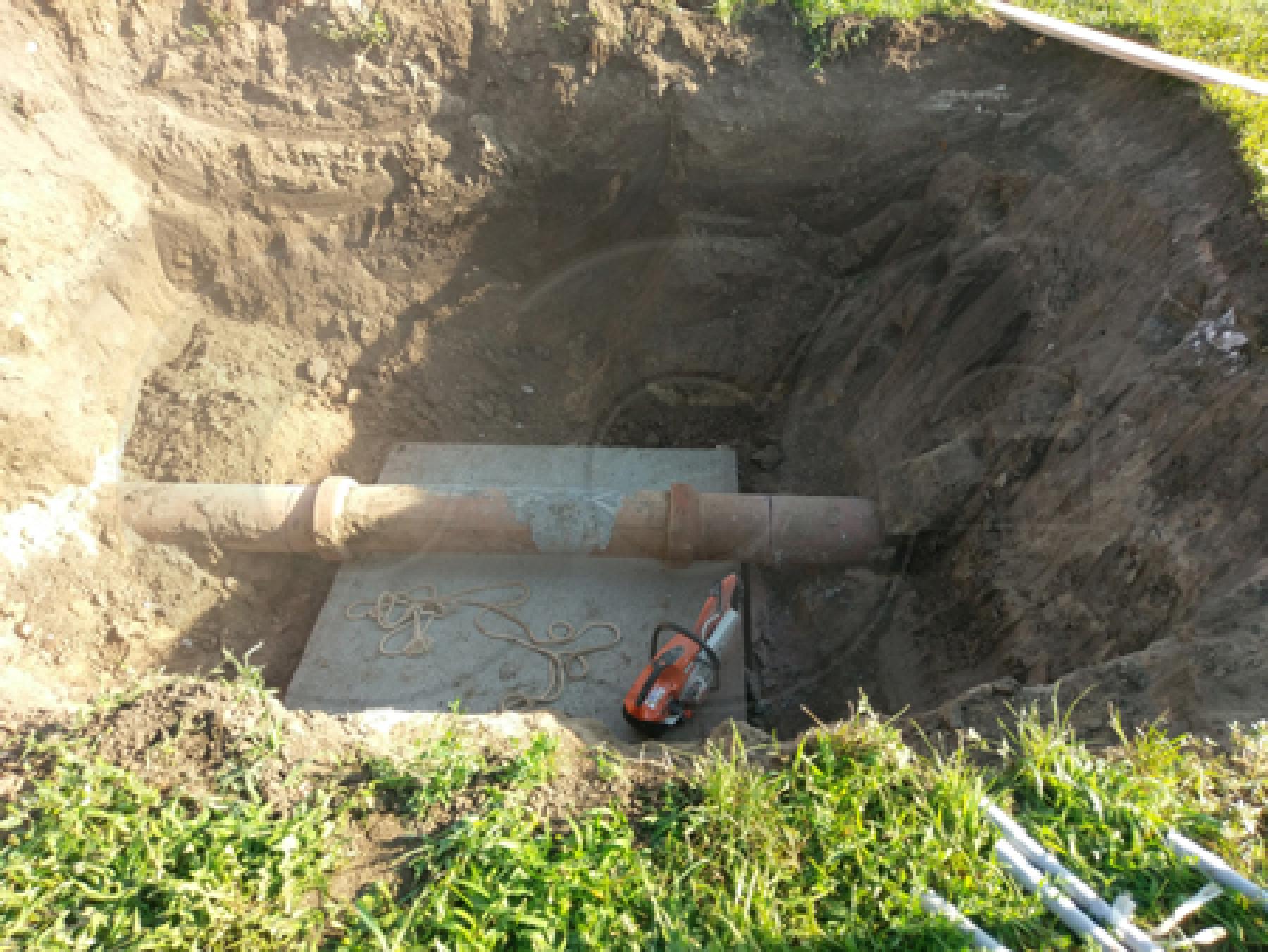
After the mounting pad has cured, flow should then be stopped (if possible) or bypass pumping instituted. Once flow has been stopped, the below grade pipe can be cut to allow the installation of the manhole.
Removing the Pipe
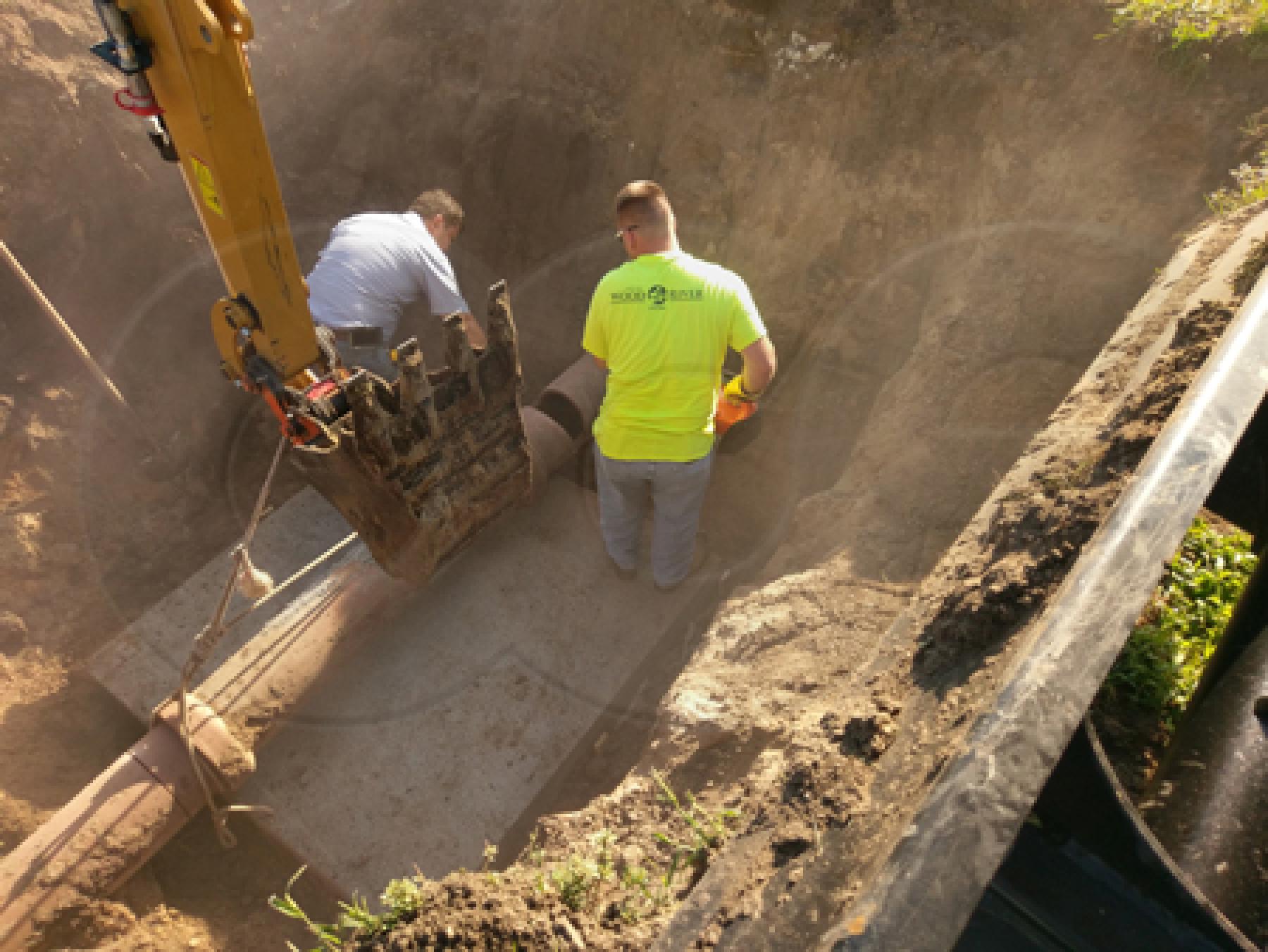
Lowering the Manhole
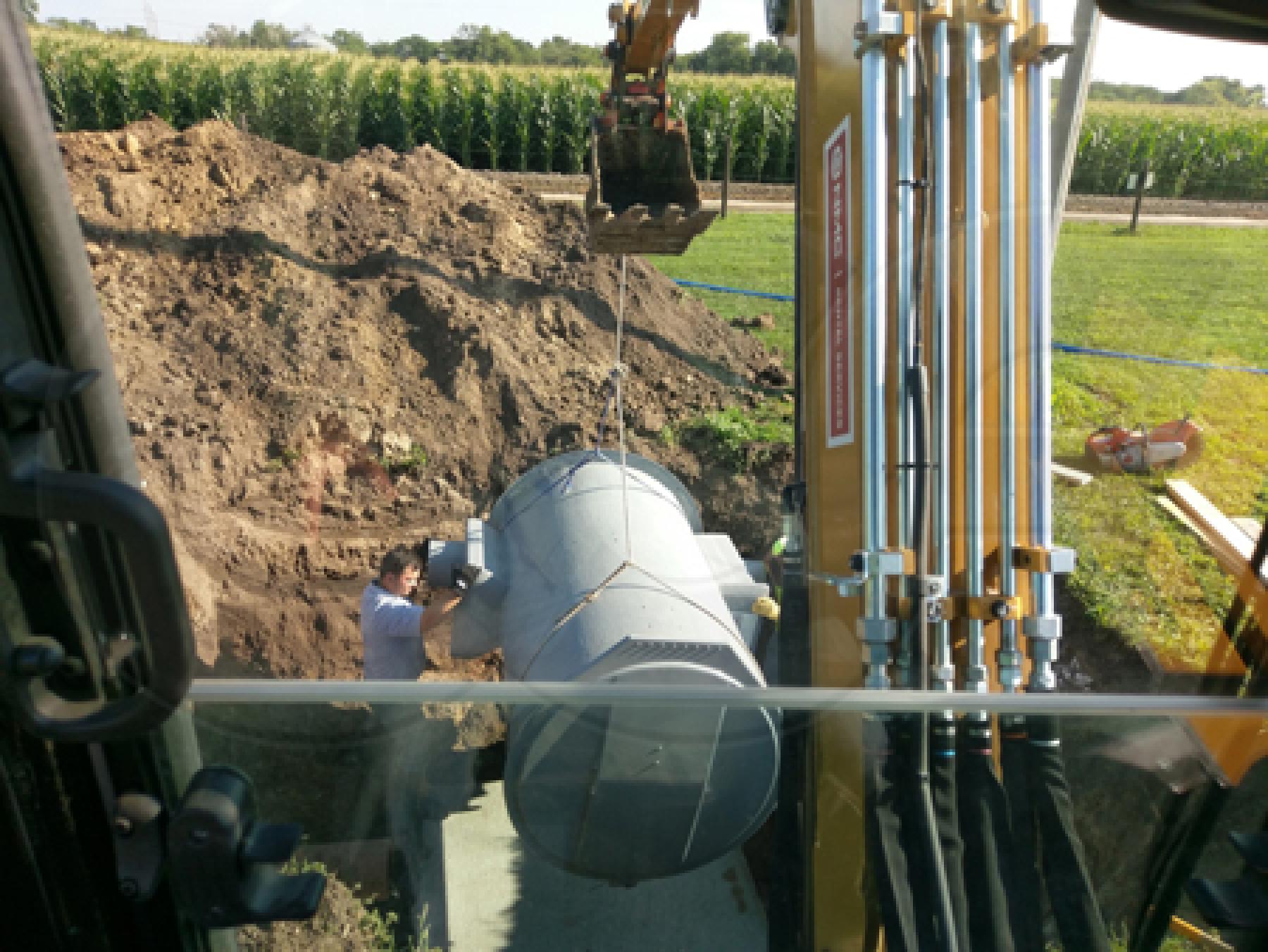
When lowering a fiberglass manhole, chains or wire should never be used as they can serrate the fiberglass. Good rigging practices should always be used with particular emphasis given to worker safety. While lighter than concrete structures, fiberglass manholes can weight more than 1,000 lbs. and represent a hazard that must be recognized and managed.
Manhole on the Pad
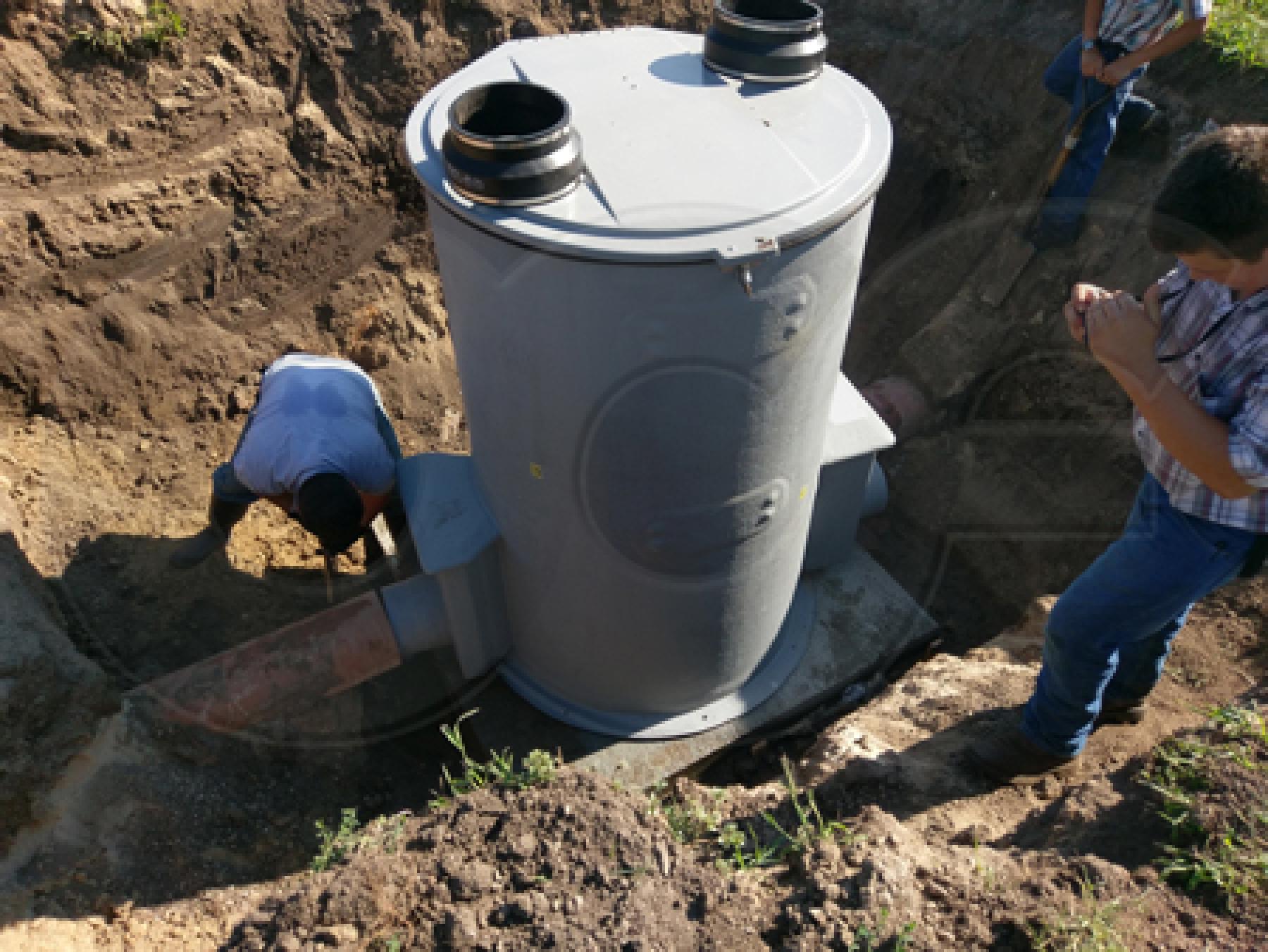
With the manhole now on the mounting pad, the structure can be moved into position for connection to the existing piping. It is usually recommended that some space be provided between the pipe and the manhole's stubs. Here the connection between the pipe and the manhole is accomplished with flexible Fernco couplings.
Couplings in Place
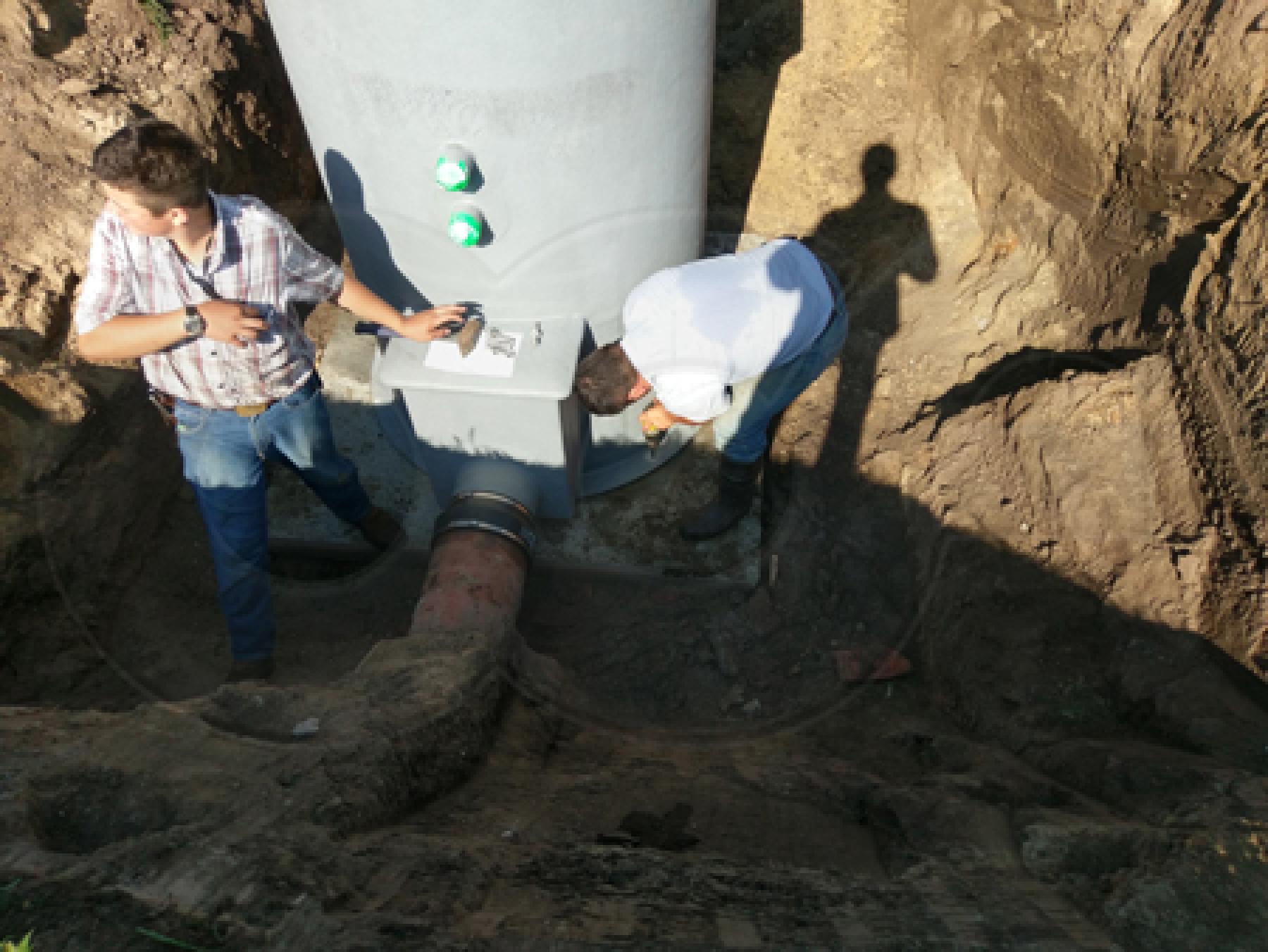
Fernco flexible couplings provide a watertight connection between the pipe and the manhole. The couplings are held in place by two stainless steel pipe bands. Shielded couplings are also available as necessary.
Leveling the Manhole
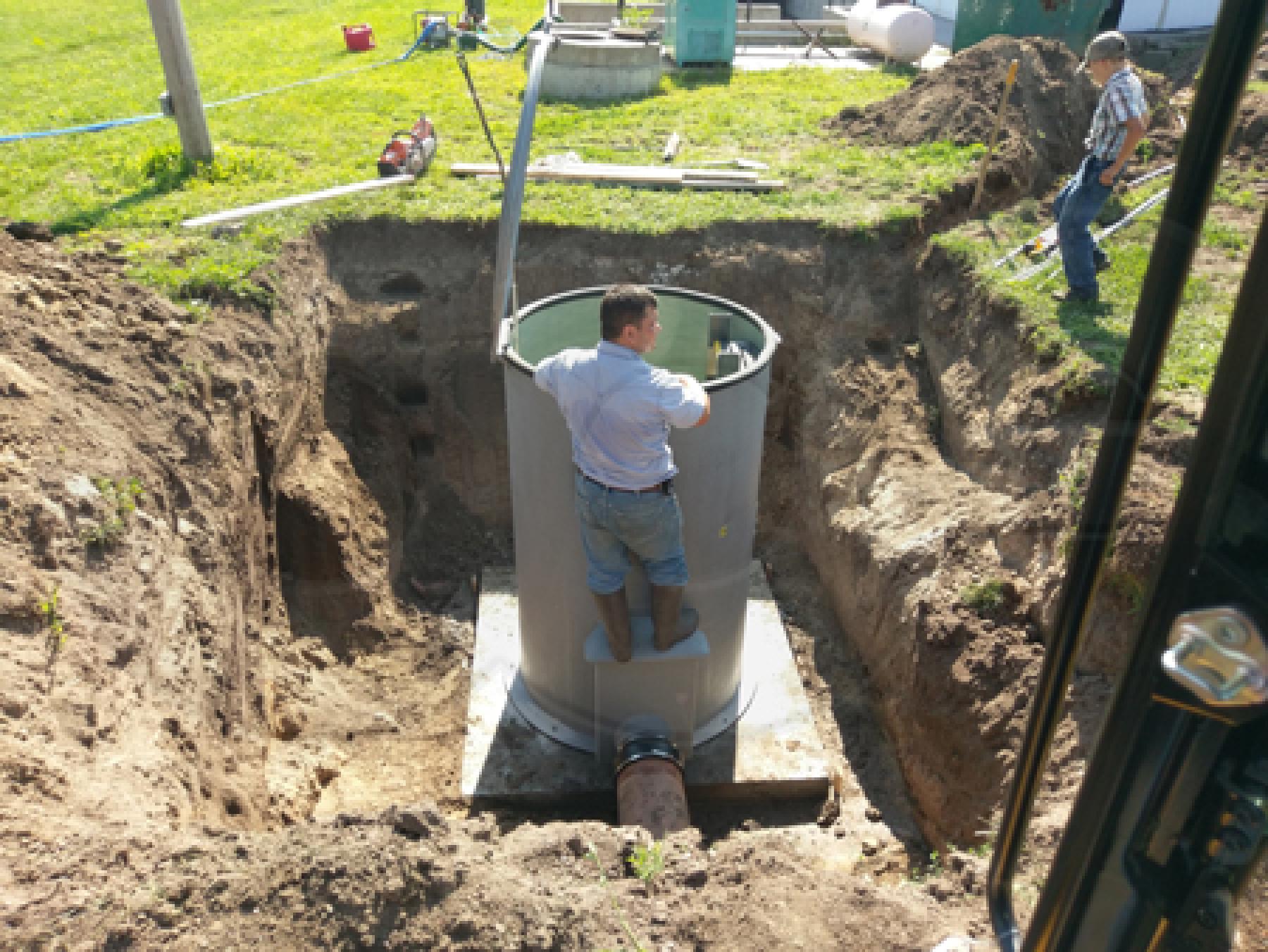
With the manhole installed, final leveling must take place to ensure that the flow device operates correctly. It is important to the device is level (versus leveling the manhole).
Backfilling the Installation
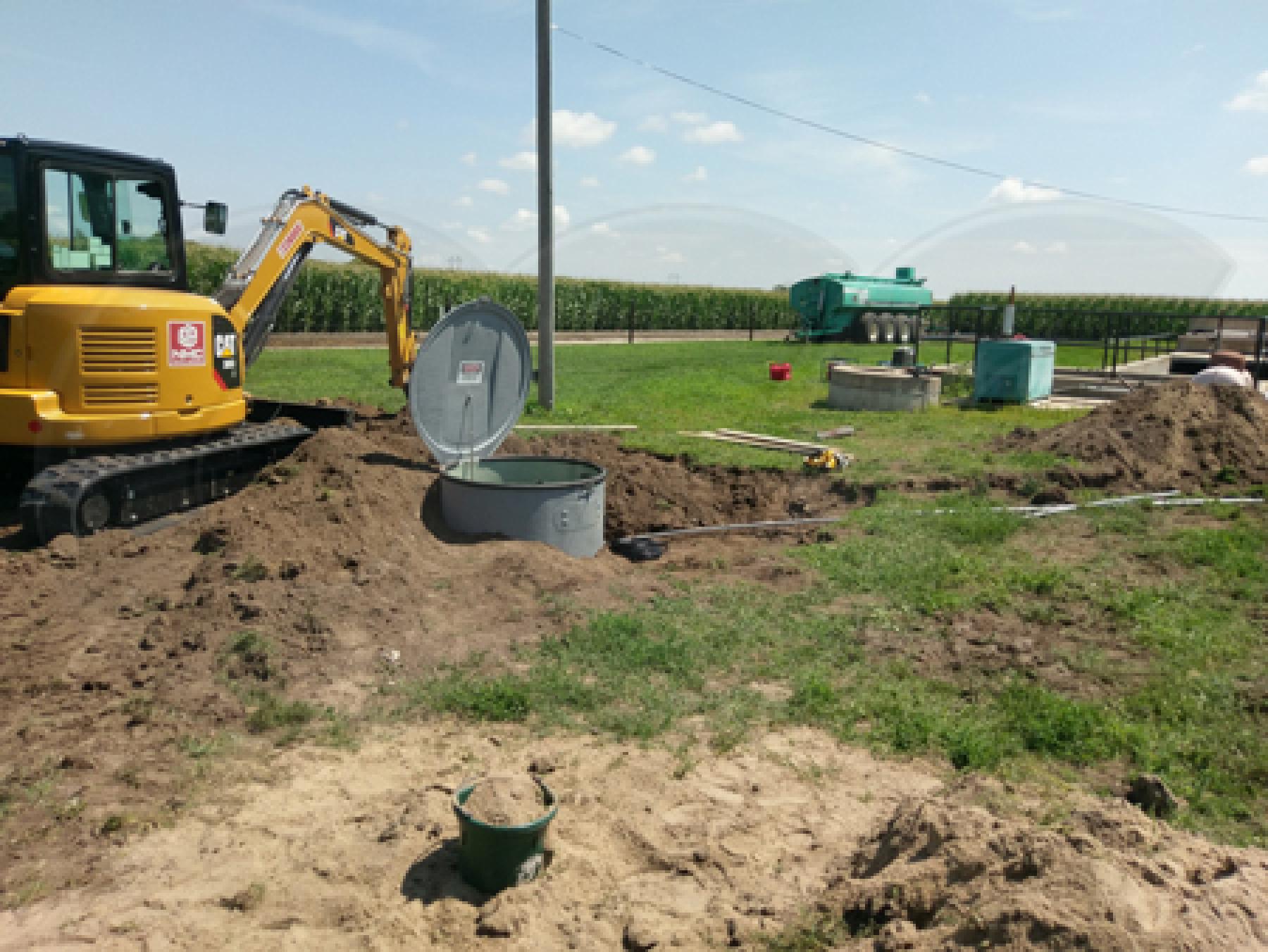
With the manhole mounted to the pad and leveled, the excavation can now be backfilled. Backfilling should take place and should only be done in equal lifts and with clean backfill material.
Completed Installation
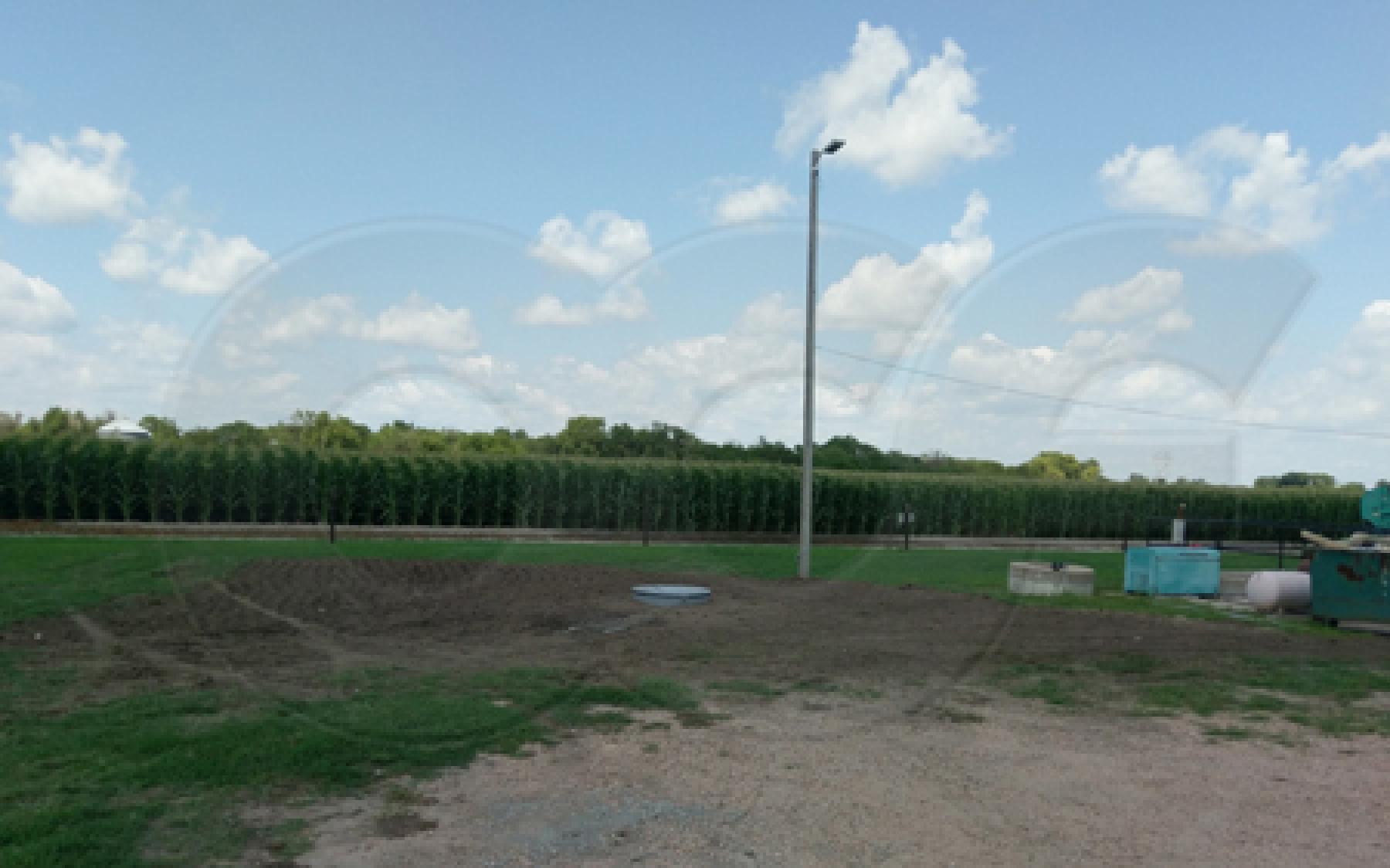
Related Blog Posts
Explore more insights in our blog.

LOCATIONS IN ATLANTA, GA & BOISE, ID


